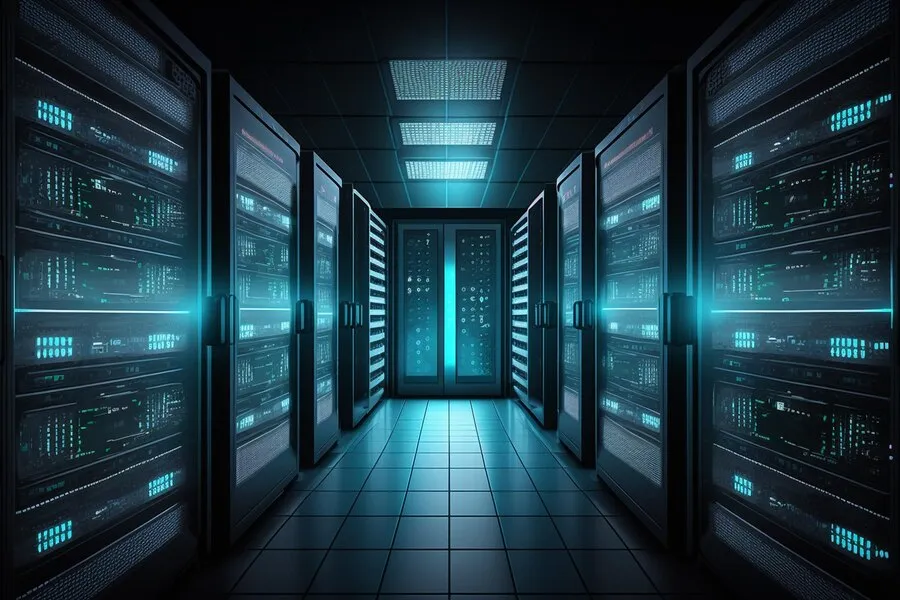Key Takeaways
- Innovations in data center infrastructure are driving sustainability forward.
- Energy efficiency is paramount to reducing carbon footprints.
- Renewable energy sources are becoming more integrated into data center operations.
- Implementing sustainable practices can result in reduced expenses and increased operational effectiveness.
- Partnerships and technological advancements play a crucial role in sustainability efforts.
Introduction to Data Center Sustainability
The push for data center sustainability has become more pronounced in recent years. With the world’s digitalization on the rise, the need for data centers has surged, causing a notable increase in energy usage. The industry is looking toward innovative solutions to reduce its environmental impact. One of these solutions is the adoption of a colocation data center. These facilities offer shared resources that can significantly enhance energy efficiency and reduce overall carbon footprints. The role of data centers in the digital age cannot be overstated. They are the backbone of the internet, supporting everything from social media to cloud computing. As a result, making these facilities more sustainable is not just an option but a necessity for future-proofing our digital infrastructure.
Innovative Infrastructure Solutions
One key area of focus is energy-efficient infrastructure. Modern data centers are evaluating state-of-the-art cooling systems to decrease energy consumption.
Liquid cooling systems, for instance, are more efficient than traditional air-cooling methods. They utilize a liquid — often water or a coolant — to absorb server heat, which is then dissipated outside the facility. This method can be up to ten times more efficient than air cooling. Advanced airflow management techniques, like hot and cold aisle containment, also play a crucial role in directing cool air precisely where needed, thereby preventing waste and enhancing overall efficiency. This technology ensures that hot air emitted from servers does not mix with the cold air supplied to cool them, making the cooling process much more effective.
Leveraging Renewable Energy
Data centers are increasingly partnering with green energy providers or installing on-site renewable energy systems to reduce dependence on non-renewable energy sources. Renewable energy trends will accelerate as technologies become more cost-effective and scalable. Two examples include installing solar panels on data center rooftops or placing wind turbines in nearby areas. These renewable energy sources often supply a significant portion of a data center’s energy needs, decreasing dependence on fossil fuels and reducing the release of greenhouse gases. Some data centers are also exploring bioenergy—energy derived from organic materials—which can offer a sustainable and efficient alternative to traditional fuels. Incorporating these renewable energy sources not only helps achieve sustainability goals but can also offer long-term financial benefits. Renewable energy systems can decrease the volatility of fossil fuel prices, providing more stable and predictable energy costs over time.
Best Practices for Energy Management
Effective energy management practices are critical to achieving sustainability goals. Regular energy audits, optimizing server workloads, and utilizing energy-efficient servers are just a few strategies that can help. Employing AI and machine learning algorithms for energy use prediction and management can also improve efficiency. Energy audits identify inefficiencies and suggest improvements, ensuring data centers operate at their highest efficiency levels. Optimizing server workloads ensures that each server operates at its peak efficiency, reducing unnecessary energy consumption. For example, virtualization can consolidate workloads onto fewer servers, minimizing energy use. AI and machine learning can predict energy use patterns and enable real-time adjustments, enhancing efficiency. These technologies can examine large volumes of data to make educated choices on energy distribution, cooling needs, and server usage, thus maximizing efficiency and reducing energy wastage.
Economic Benefits of Sustainability
Sustainability is not only advantageous for the environment, but it can also bring financial benefits. Energy-saving methods usually result in decreased operating expenses, and sustainable energy sources can lead to cost savings over time by balancing initial setup expenses with lower utility bills. Moreover, many governments offer incentives for companies that adopt green technologies, such as tax breaks or grants. These rewards can significantly reduce the financial strain of investing in sustainable practices for the first time. Furthermore, adopting sustainable measures can enhance a company’s reputation, attracting investors and customers who prioritize environmental responsibility. This positive public perception can lead to increased revenue and market shares, further contributing to the economic benefits of sustainability.
Technological Advancements and Future Trends
The future is bright for data center sustainability, with continuous technological advancements paving the way. Innovations like modular data centers and AI-driven energy management systems will likely play a significant role. Moreover, ongoing research and development in sustainable materials and technologies will continue to drive progress. Modular data centers, for instance, are prefabricated units that can be quickly assembled on-site. They are created to save energy and can be adjusted in size according to need. These modular units are frequently equipped with advanced cooling and energy management systems, instantly boosting efficiency. AI-driven energy management systems can continuously monitor and optimize energy use, making real-time adjustments that improve efficiency and reduce waste. These systems can predict future energy requirements and dynamically allocate resources, ensuring that data centers operate at peak efficiency at all times.
Future trends include developing more sustainable building materials and integrating innovative grid technologies to optimize energy use and distribution. Incorporating these technologies will enhance the resilience and flexibility of data centers, enabling them to meet the increasing demands of the digital era while reducing their environmental footprint.
Also Read: Choosing a Proxy provider for Cybersecurity
Collaborations and Partnerships
Collaborations between tech companies, energy providers, and environmental organizations can accelerate the adoption of sustainable practices. Public-private partnerships and industry-wide initiatives can lead to incredible innovation and investment in sustainable infrastructure solutions. For example, tech giants collaborating with renewable energy providers can ensure a more stable and sustainable energy supply. Environmental organizations can offer expertise and guidance on best practices, while public entities can provide regulatory support and funding. Initiatives like these drive technological advancements and foster a culture of sustainability within the industry. Collaborations can share knowledge, resources, and innovations, creating a collective effort toward achieving sustainability goals.
Final Thought
Ultimately, the drive for sustainability in data centers is not only a fad but an essential requirement. The sector can significantly decrease its environmental footprint by implementing creative infrastructure solutions, utilizing renewable energy, and adopting top energy management practices. The economic benefits and positive environmental outcomes make sustainability a win-win for all stakeholders.




